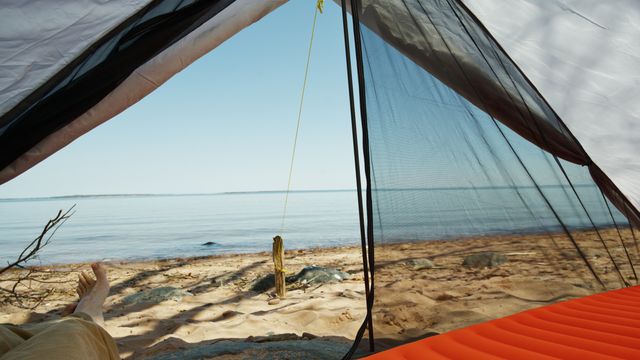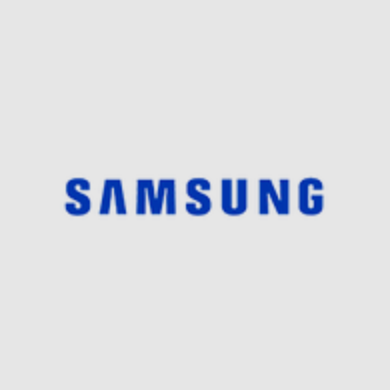All products featured on WIRED are independently selected by our editors. However, we may receive compensation from retailers and/or from purchases of products through these links. Learn more.
When the smartphone in your pocket is loaded with a growing arsenal of safety tools—including location tracking, fall detection, and SOS alerts—it’s very tempting to adventure off the grid without back up. But if your hikes, runs, and rides regularly take you beyond the reach of cell towers, into more extreme conditions and terrain, sticking a dedicated satellite messenger in your pack might just save your life.
Unlike smartphones, satellite communicators don’t rely on Wi-Fi or network coverage to keep the comms lines open. So if the proverbial, you know, hits the fan where no one can hear you scream, you can still send up a virtual flare to summon help. Yes, they can be pricey. It’s another gadget adding weight to the pack, and they’re still not quite as easy to use as What3Words on your smartphone. But none of that will matter if you get lost in the backcountry without a way to call in rescue. At that point a reliable sat comm will look like a lifeline, not a luxury.
So how do you decide which adventures need extra safety insurance? WIRED’s expert outbackers have put together a quick guide on when you need a satellite messenger versus when a smartphone will do.
When Your Phone Has Your Back
Most of us already hit the trailhead carrying a charged smartphone, and when you've got a signal, they offer some useful safety benefits. If you never venture too far off the cellular grid, stick to places with a high footfall of fellow adventurers, and your day hikes, trail runs, or rides don’t drain a full phone battery, your cellphone probably has you covered.
In fact, there are some scenarios where a phone can outperform a satellite messenger. “Smartphones offer richer mapping apps, faster communication, and familiar usability,” says The North Face athlete and British mountaineer Fay Manners, who has firsthand experience with calling extreme mountain rescue. “They are also sufficient for short outings where you’re unlikely to leave coverage zones.”
“A cellphone is also best when voice communication is a requirement,” says Harding Bush, former Navy SEAL and Global Rescue associate director of security. “Also, when transmitting photographs is a requirement.” (It's worth noting that some of the most advanced Garmin inReach satellite devices now also support photo and voice messenger capabilities.)
Even if you occasionally venture further off-piste, certain Apple (iPhone 14 and newer), Google (Pixel 9 and newer series) and Samsung smartphones now offer emergency SOS features via satellite, along with crash and fall detection that can auto-dial emergency services and share your location if you’re unresponsive.
On newer Apple iPhones (and Apple Watches,) the Emergency SOS safety net can still connect you to rescue crews even when you’re out of cellular service, though it’s limited to transmitting key information when you’re in a sticky situation: where you are, what condition you're in, and what you need help with. Unlike a satellite messenger, it won’t offer live tracking or two-way messaging where there’s no 4G/5G.
Pro tip: You’ll need to check the region to make sure cell SOS services are available. Some have only been deployed in the United States.
Why Pack a Satellite Messenger?
If you’re firing up Expedition Mode and embarking on remote travel or outdoor adventures where cellular coverage and proximity to civilization is scarce, a good satellite messenger can be an important additional insurance policy to your smartphone.
“A satellite messenger is essential any time I head into remote areas where cell service is unreliable or simply doesn’t exist,’ says Manners. “In the Himalayas, for example, mountains, cliffs, and ridgelines block any signal between my phone and the nearest tower. In many high-altitude regions, towers don’t exist at all because they are too difficult to build and maintain, or the distance is simply too great for a phone to connect.
“A satellite messenger removes all of those limitations," Manners continues. "Instead of relying on ground towers, it connects directly to satellites orbiting the Earth, allowing me to send messages, share my location, or trigger an SOS no matter how isolated I am.”
You want a satellite messenger when you're thinking: Multiday hikes, ultra runs, thru-hikes, or backcountry skiing, as well as excursions into high-risk, low-signal environments like deserts, mountain ranges, dense forests, or offshore trips.
These mainly handheld devices use the Iridium and Globalstar low-Earth-orbit satellite networks, which are generally used for communication because they take less energy and have far less lag time than GPS. Most have basic screens to save power and long multiday battery life. Some endure as long as 200 hours.
“These devices are built for purpose,” says Kevin Stamps, Garmin Response senior manager. “Specialist battery life capabilities mean it will not run out like your smartphone does, and reliable, durable and rugged designs are military-grade to suit challenging environments.”
“When I’m climbing in the Khumbu Valley and moving above 5,500 meters, the temperatures drop so low that a smartphone battery quickly drains or shuts down altogether,” says Manners. “A satellite messenger, however, is built to keep working in sub-zero conditions, at altitude, and even after being knocked around in a pack. That level of durability makes it a far more reliable safety tool in the high mountains.”
That old saying “no news is good news” doesn’t quite stand up when you’re heading into high-risk environments. Devices like the Garmin InReach Mini 2 beam your location onto sharable maps for real-time tracking. Some can also be programmed to activate tracking when you reach or depart from specific locations, sending automated alerts to loved ones when you hit milestones on your adventure.
If you’re on a team mission, certain satellite messengers like the Zoleo Satellite Communicator also enable app-to-app messaging without SMS charges. Plus, you can also send automated SMS messages to groups of contacts to alert them when you start and stop tracking. I used this Garmin InReach Mini feature daily while running for 67 days across Europe as a really easy way to let people know I was up and moving, or I’d reached my end destination for the day.
The best satellite messengers offer more than just metaphorical flares, too. Beyond sending one-button distress signals to 24/7 monitoring centers, carrying a sat comm unlocks tools like two-way messaging to family, crew, or rescue teams and navigation tools. Many devices include offline maps, route planning, waypoints, breadcrumb trails and back-to-start routing, should you wander off track.
“On bigger expeditions to remote ranges, [a satellite messenger] becomes absolutely essential. I use my device not just for emergencies but also to receive weather updates and access forecasts,” says Manners. “Which are critical when you’re far from civilization and conditions can change quickly.”
However, even the best satellite messengers have limitations. You still need clear skies and performance can be hampered by trickier terrain like deep canyons or dense tree cover. Messages aren’t as instant as Whatsapp, either. They can typically take up to 5 minutes to send and receive. Then there’s the cost. Most messengers require a monthly subscription (around $10 to $15 per month), to unlock these geo-located safety services and you might need to invest in different regions if you’re venturing overseas.
Do You Need One?
If you're not sure if you need a satellite messenger, our experts have some simple tips to help you decide.
“I’d start by asking how remote you plan to go, how long you’ll be out, and how much risk you’re comfortable with,” says Manners. “For me, I carry a satellite device even in the Alps. When I’m opening new routes or moving into more complex terrain, I can easily slip out of phone signal. Having the messenger with me means I can always contact someone if something goes wrong and it gives me that extra layer of safety I like to have.”
Bush offers similar advice. “Evaluate the cellular coverage where you will be and how long you will be without coverage. Evaluate the associated risk of the activity and the emergency services infrastructure in that area and finally, talk with people that have been to the area before, and query how essential a satellite messaging and tracking device was.”
You might not have a choice. If you’re taking on an organized challenge, a satellite messenger may well be on the obligatory kit list. Ultrarunner Melissa Fernandez is about to embark on the Ultra Gobi 400, a 400-km self-nav, largely solo run across Gobi Desert and race rules stipulate she has to carry backup. “Durability, reliability and battery life are mission-critical,” says Fernandez. “Weight and size are also important, as I’ll be carrying lots of kit over 400 kms. Cost obviously comes into it. So think carefully about what you really need, to avoid paying for functions you’ll never use."
While SOS services on your smartphone may be a helpful backup, there are certain places and situations where safety demands that you get a satellite messenger. If you're looking for one that's been through the wringer, we've tested the best ones so that you can get back to training instead of preparing for (hopefully) unlikely emergencies.
Power up with unlimited access to WIRED. Get best-in-class reporting and exclusive subscriber content that's too important to ignore. Subscribe Today.

.jpg)


















